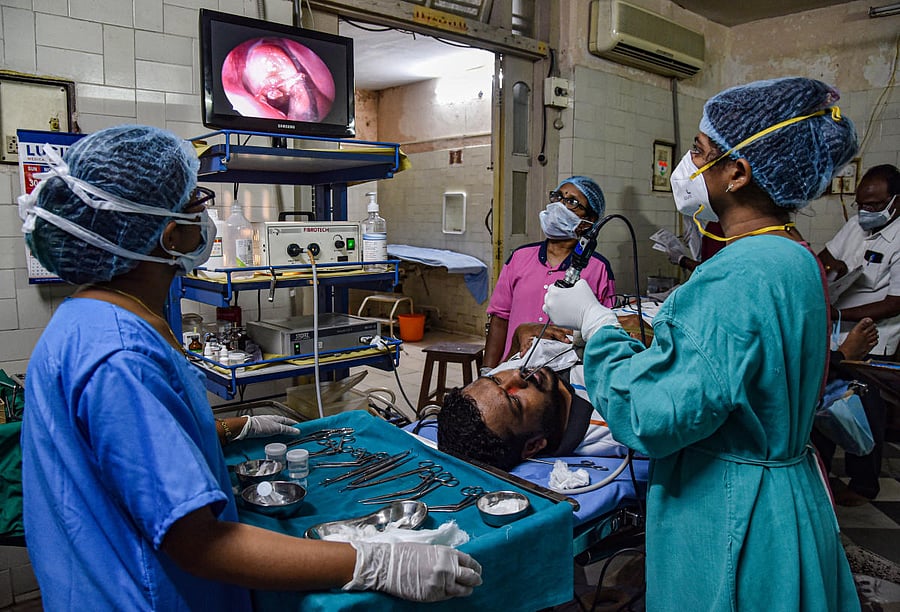In early 2020, Italy was the first member of the European Union to suspend flights to and from China, Hong Kong, Macau and Taiwan to contain the spread of the novel coronavirus. At the time, relations between Italy and China were at an all-time high, hence this decision was followed by appeasing gestures by the Italian leadership towards the Chinese. One of these included the ‘Hug a Chinese’ campaign announced by the Mayor of Florence on February 1, 2020. This was a well-intentioned campaign calling for “Unity in this common battle!” Many Italian netizens responded by posting photos of themselves hugging a Chinese national. It was to have a disastrous fallout as this led to the rapid spread of the virus. This is an example of what happens when government decisions involving public health are taken without understanding the nuances of a subject matter as complex and technical as health.
India had an ‘Indian Medical Service’ in British-ruled India, a military medical service, which was abolished when India got independence in 1947. Ever since, multiple committees and commissions have recommended the re-introduction of this service. In fact, the All-India Service Act of 1951 mentions ‘The Indian Medical and Health Service’ as an All-India Service, but for some reason, it was never implemented.
Given the inter-State disparity in the availability of health resources, the plethora of healthcare schemes, the need for uniformity of implementation of these flagship schemes across the country, national health programmes management, organ transplant management, pandemic management, to quote a few, not to mention the fast-evolving nature of the subject per se, it is essential to constitute an All-India Medical and Health Service, as is envisaged under Section 2A of the All-India Services Act, 1951.
The 15th Finance Commission has also recommended that an All-India Medical and Health Service be established. Furthermore, the Covid pandemic has led to a renewed demand for the constitution of the Indian Medical & Health Service (IMHS).
A purely generalist service like the IAS, or a purely technical service like a pool of doctors (like the central pool of doctors selected through the combined medical service exam, or the state-level cadres of doctors), may have outlived their roles in managing healthcare in today’s environment. However, a word of caution here. It may be pedestrian to think that an All-India Medical Service can be like the IAS or the IPS in its structure and functioning. The IAS and IPS are services that have no formal specialisation within them. This may not work in the Indian Medical Service.
To explain this point further, note that in India, there are not just allopathic doctors but also doctors of the alternative systems of medicine, commonly known as AYUSH doctors. In fact, there is also a separate Ministry of AYUSH, and even Indian missions abroad have AYUSH facilitation centres. These systems of medicine have entirely different concepts of disease causation and cure. Further, within each of these systems of medicine, there will be graduates in medicine and post-graduates in medicine. The point here is that a common entrance exam to the Indian Medical Service will lead to the selection of a very diverse group whose existing skillsets will have to be fully utilised, and new skillsets added, if the true potential of such a service is to be realised.
So, while we can select IAS and IPS officers through a competitive exam and after two years of training, they are all set to handle their job (with periodic refresher courses), we may have to structure the selection, training, and deployment of an Indian Medical Service differently. It may also be worthwhile to consider the existing services in the states and the central government and their integration into IMS and eventual phasing out.
The training of such officers, selected through a competitive exam, should include an intensive hands-on module to hone clinical skills in a high-occupancy hospital in their zone/state of allocation. Top clinicians from the private sector could also be roped in for this. Additionally, the curriculum should include healthcare and general management. They should also be taught by the leading healthcare management faculty. Case study-based approach should also be included in their training, as also the latest developments in medical jurisprudence, ethics, telemedicine, artificial intelligence, soft-skills training. General management training with a focus on healthcare administration would be ideal. Periodic refresher trainings are imperative as healthcare management is a fast-evolving field. These should form part of performance reviews.
These officers should be responsible for healthcare delivery in the public sector hospitals, for implementation of the various healthcare schemes, for healthcare administration, and policy inputs. Administrative posts of public hospitals, government medical colleges and public health institutes should be manned by officers of the health management stream of the Indian Medical Service. The health secretaries of the state and the central governments may be officers of such a service.
There should be a strict cooling-off period in case an officer of the IMS wants to resign and go into private practice; s/he should not be allowed to practice in the last two areas of posting for a period of two years. The remuneration and service conditions should be attractive to draw the best talent to this service.
It is time to rethink how we administer healthcare in the country. In the current scheme of things, neither the career bureaucrats (even if some of them have a medical degree) nor the career government doctors have the requisite training or insight into the myriad hues of the complex issues that healthcare throws up. Perhaps creating a cadre of technically qualified and well-trained force will help to overcome that. We must look at the idea of an IMS with fresh eyes. The world is changing very fast, and we cannot explore a new world with old maps.
(The writer is Senior Consultant, Niti Aayog, Government of India. Views expressed are personal)
